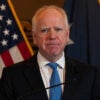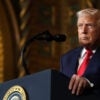“What’s the point of having this superb military that you’re always talking about if we can’t use it?”
—Madeline Albright, 1993, as she argued for sending U.S. troops to Bosnia
There’s an undertone to Albright’s quip, one that suggests a sharp distinction between how progressives and realists view the purpose of the people in the Pentagon.
Realists take the constitutional charge to “provide for the common defense” at face value. They see the primary purpose of the armed forces as providing the coercive force necessary to protect the nation. Unlike the European monarchs, America’s founders did not view war as the sport of kings. Democracies would fight only to protect vital national interests.
Sure, the Constitution gives broad discretionary authority to the commander-in-chief in how to best to employ the armed forces. Over the course of American history, presidents have used the military for ancillary tasks from Reconstruction, to policing the frontier, to responding to natural disasters like Hurricane Katrina. But these activities were never the military’s main mission. Nor were they ever to detract from the primary task – often described as “fighting and winning the nation’s wars.”
Progressives, on the other hand, tend to see the military as just another instrument of government. They interpret the president’s authority as commander-in-chief as carte blanche to use the armed forces for any purposes they see fit. As the Center for American Progress website explains, government can “champion the common good over narrow self-interest, harness the strength of our diversity, and secure the rights and safety of its people.”
Using the military to pursue all governmental goals is a no-brainer for progressives. After all, it helps make government more “open and effective.”
These are contrasting and incompatible visions. One is intent on preserving the armed forces primarily as war-fighting instrument. The other lacks that constraint.
Our current commander-in-chief’s thinking about the armed forces is clearly in the progressive camp. Indeed, it’s on the far side of that camp.
The most recent expression of this sentiment was President Obama’s declaration to the graduating cadets at West Point that “the global effort to combat climate change, a creeping national security crisis that will help shape your time in uniform …” In other words, a primary, role-shaping mission for Obama’s military is to fight the weather.
Clearly, the military has been drafted into a war on climate change. The White House is forcing the armed forces to spend scarce dollars on “green energy” programs, whether they make sense or not. The Government Accountability Office reports that the Pentagon paid $150 per gallon for jet fuel made from algae–more than 64 times the going price for regular jet fuel.
The administration even ordered construction of a “green energy line” through the White Sands Missile Range, even though defense officials warned it might disrupt vital operations at one the military’s most important test and training facilities.
When the military is just another government department, it’s seen as a fungible resource. Hence, military forces can be swapped out for “smart” power–like the president’s personal diplomacy. And defense dollars can be swapped out for other public uses–such as boosting the budget for food stamps.
One gets the impression that the president and his inner circle are struggling to understand why Americans are increasingly skeptical of his leadership, why foreign friends and allies are increasingly unsure of America’s resolve, and why less friendly powers are increasingly emboldened to act against America’s interests. In searching for an answer, they should take a hard look at how they have used and treated our armed forces.
Originally posted on Washington Examiner.
































